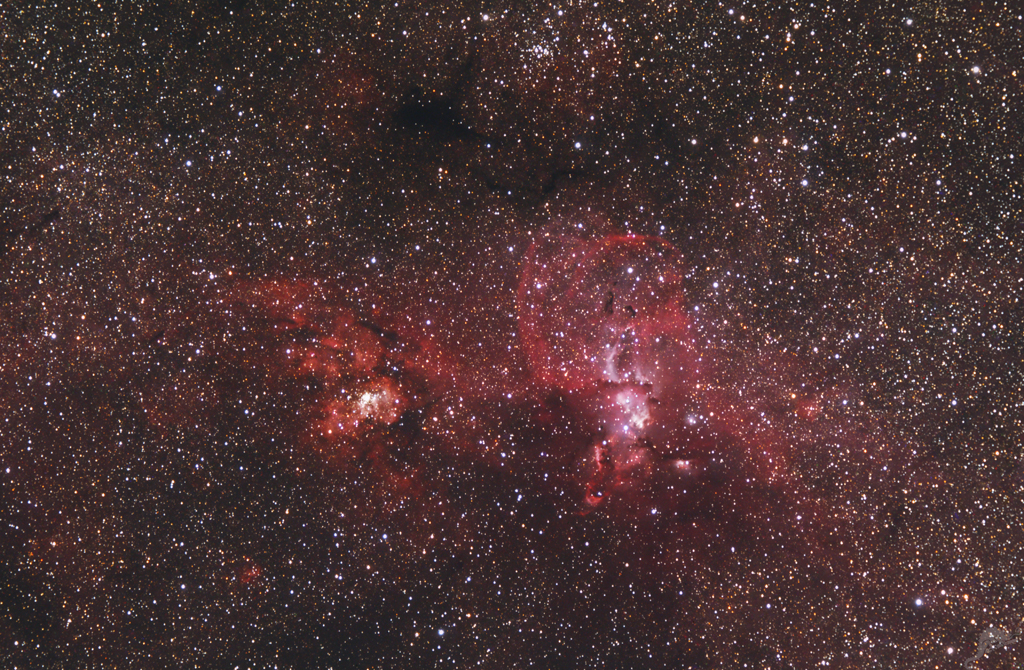 |
CHAMÄLEON + ONJALA OBSERVATORY DeepSky | SITEMAP HOME CHAMÄLEON |
|
 |
|||
| « back to overview Nebulae | Load higher resolution (1800 x 1200 Pixel) (2800 x 1800 Pixel) | Object description |

| NGC 3603 is a very bright star
cluster and is famed for having the highest concentration of massive stars that
have been discovered in our galaxy so far. At the centre lies a Wolf–Rayet
multiple star system, known as HD 97950. Wolf–Rayet stars are at an
advanced stage of stellar evolution, and start off with around 20 times the
mass of the Sun. But, despite this large mass, Wolf–Rayet stars shed a
considerable amount of their matter due to intense stellar winds, which blast
the star’s surface material off into space at several million kilometres
per hour, a crash diet of cosmic proportions. NGC 3603 is in an area of very active star formation. Stars are born in dark and dusty regions of space, largely hidden from view. But as the very young stars gradually start to shine and clear away their surrounding cocoons of material they become visible and create glowing clouds in the surrounding material, known as HII regions. HII regions shine because of the interaction of ultraviolet radiation given off by the brilliant hot young stars with the hydrogen gas clouds. HII regions can measure several hundred light-years in diameter, and the one surrounding NGC 3603 has the distinction of being the most massive in our galaxy » NGC 3603 - Multispectralimage (V, R, I) FORS-Instrument at the VLT © ESO Click here or the thumbnail to see a large image. |
 |
 |
NGC 3576 also lies in the
Carina–Sagittarius spiral arm of the Milky Way. But it is located only
about 9000 light years from Earth - much closer than NGC 3603, but appearing
next to it in the sky. NGC 3576 is notable for two huge curved objects resembling the curled horns of a ram. These odd filaments are the result of stellar winds from the hot, young stars within the central regions of the nebula, which have blown the dust and gas outwards across a hundred light years. Two dark silhouetted areas known as Bok globules (marked with circles) are also visible in this vast complex of nebulae. These black clouds near the top of the nebula also offer potential sites for the future formation of new stars. Such black clouds can also found in other H-II regions, so as an example in IC 2944 « The image at left shows a high resolution comparison at nearly same scale of the region around the Bok globules. The left image |
NGC 3576 was also discovered by John Herschel in 1834, making it a particularly productive and visually rewarding year for the English astronomer in South Africa.
 |
 |
 |
 |
 |
 |
 |
| Sun | Moon | Solar System | DeepSky | Widefield | Miscellaneous | Spec. Projects |
